#afrolatino
Text

320 notes
·
View notes
Text
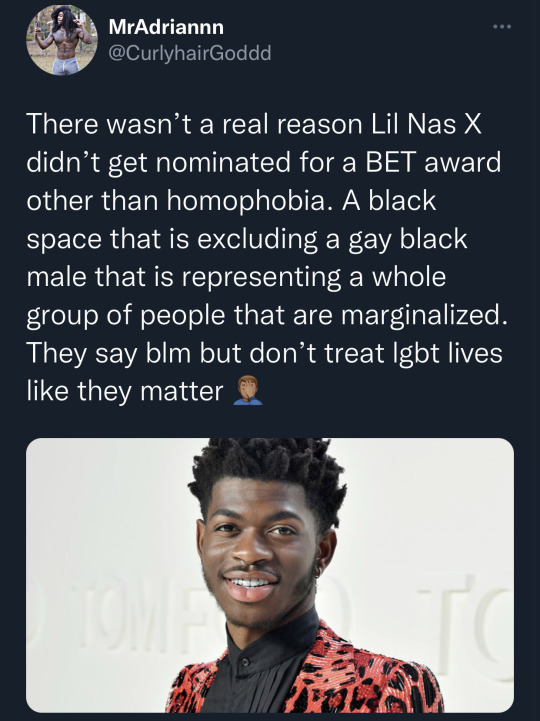
Our community still suffers with extreme homophobia that is gaslighted and brushed under the rug. The hate is so normalized
#afrolatino#afro#gay male beauty#blackexcellence#lgbtq positivity#lgbtpeople#lil nas montero#lil nas x#lil nas fanart#gay pride#lgbt representation#lgbt history#black lgbt#blm movement#blm#gay black#gay poc#poc aesthetic#gay#transgender#bisexual#lgbtq#lgbtwriter
3K notes
·
View notes
Text
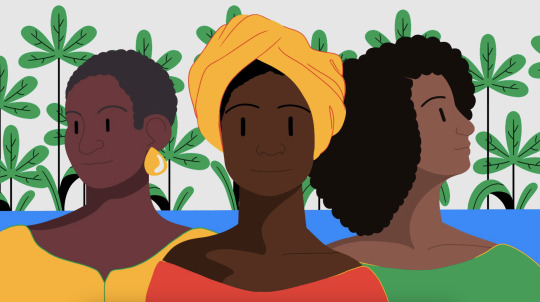
International Afro-latin + Afro-Caribbean Women's Day
raquel gouvea
309 notes
·
View notes
Text

Triunfo, Pernambuco, Brasil 🥭
#brasil#brazil#photography#nordeste brasileiro#nordeste#pernambuco#fruits#cottagecore#afrolatino#afrobrasil#afrobrazilian#america latina#latinoamerica#latin america
463 notes
·
View notes
Text
My number one priorities when it comes to loving and protecting and helping people are black folks,kids and trans women.The reason i'm saying this is that i've learned that the following three are considered 'proggressive' mentalities on here:
It's okay to talk over black people on black issues and to appropriate our culture because 'it's so popular to do it you can't expect us to stop,just accept it!' and Ackstually we have privilige over other poc because of hypervisibility
Minors are all big dumb babies who're immature and don't understand the consequences of their actions for thinking abuse/incest/ped0philia/etc are gross and are gonna take away our 'freedom' so we need to bully them off social media even if the fandoms they post about are of children's media
Transfems are just reinventing gender roles if they're femme and love being called traditional girl terms and generally being treated like cis women are only with their transfeminism in mind so there's a few differences that are still respectful of them being female and are just as bad as trans////phobes if they cope with trauma given to them by men by joking about how much men suck so they should prioritize the feelings of transmascs they don't know because they matter most
If you feel offended by any of this because it applies to you,good :) You deserve to feel insulted and i consider you a loser who nobody should like and hope you step on an entire lego kit♡
#antiblackness#black tumblr#children's rights#transmisogyny#blackness#afrolatino#afrolatina#child abuse cw#antiproship#bullying cw#ableism#abuse cw#anti booktook#transfem#tgirl swag#mtf#transfemme#femme#femmegender#trans women#transmasc/transfem solidarity#💌#summerposting
27 notes
·
View notes
Text
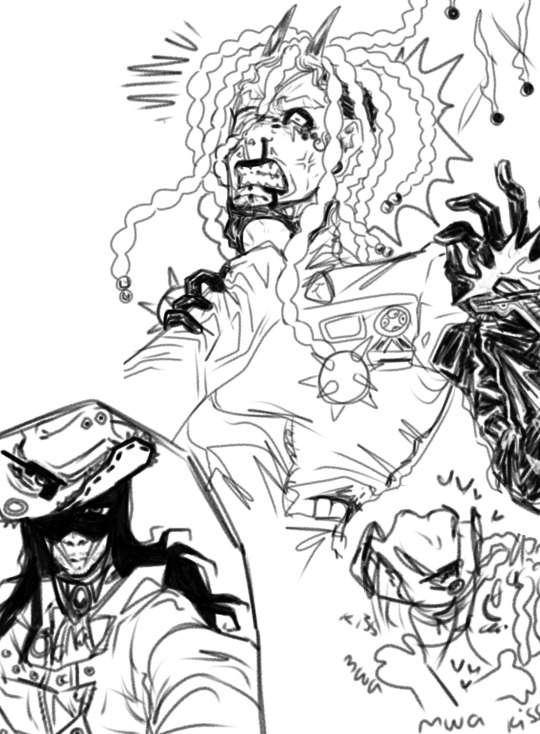

haiiii more chainsaw man oc stuff Iwa is my pride and joy ‼️ also on the left i redesigned my bf's oc to be a cowboy bc yk what. we need that. we need a cowboy in chainsaw man. thats gay. and evil. and kisses boys. yeah. anyways fuckijg soldier devil realness
#digitalart#art#chainsaw man#chainsaw man anime#csm#csm fanart#csm art#oc#oc art#my ocs#sillyposting#gay men#my silly little guy#gay gay homosexual gay#afrolatino#chainsaw man oc#theres so many tags im so sorry
22 notes
·
View notes
Text


last year, my friend Túlio M released this absolutely impeccable EP give it a shot, escutem-no!
instagram
spotify
other links
#🌺.png#🌟.jpg#💐.xml#tuliomofc#mateus túlio#indie music#brazilian music#Black artists#described#Afrolatino#Black musicians#artistas brasileiros#brasil#album art#ep cover#album cover
13 notes
·
View notes
Text
Steven Beck
#hombres negros#blackmen#muscular black men#seasoned men#hommes noirs#beard#muscles#hommes#bodybuilding#beau#video#afrolatino#flexing#posing
143 notes
·
View notes
Text
I have known about Victoria Santa Cruz's work about as far back as secondary school but this is truly the most thorough and comprehensive article I've read on her work that does a great job of situating her in a broader, cross-cultural context; or in other words the "why" her work matters beyond borders.
Some powerful quotes that struck me:
"In a 2007 interview, Santa Cruz described how as a little girl, she had been playing with a group of friends when a new girl with blond hair joined them and stated that if Santa Cruz remained, she would leave. Her friends promptly told Santa Cruz to leave, which to her, exemplified who held power and who had the right to wield that power."
The author does a great job building context with this line:
"In the 1960s and 1970s, Black activists in the United States, like Santa Cruz in Peru and Paris, redefined and recreated what it meant to be Black. Black with a capital 'B' is about self-naming, self-defining, and self-determining, which can be seen in the work of Santa Cruz. It is, at times, biographical, exhibiting the arduous process she has endured to form an identity that isn’t controlled or concerned with outdated stereotypes and instead honors a rich heritage inherited and a [sense of self] not founded in shame."
Victoria Santa Cruz is originally from Perú, not the Caribbean, but as I touched on in a previous post, sharing this work is a part of a broader personal initiative to expand the narrative when talking about Latin America and the Caribbean and its diáspora.
#memoria ancestral#ancestral memory#victoria santa cruz#afrolatina#afrolatino#afrolatinx#peru#diaspora#diáspora#black studies#black studyblr#black diaspora#what i'm reading#perú#lima perú#lima peru
3 notes
·
View notes
Photo
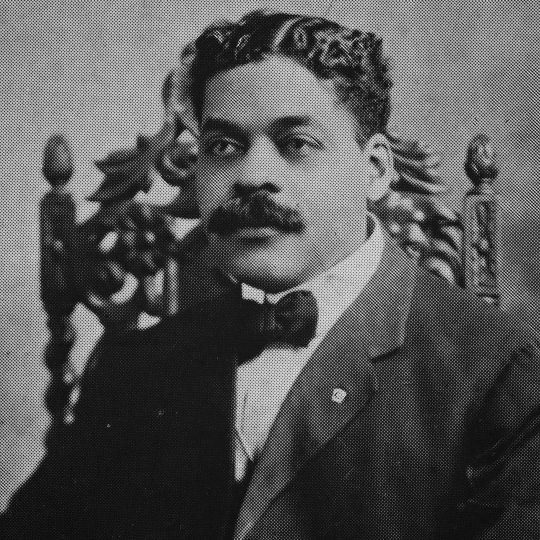
Today In History Arturo Schomburg born January 24, 1874 in Santurce, San Juan, Puerto Rico. Schomburg was a Puerto Rican historian, writer, and activist in the United States who researched and raised awareness of the great contributions that Afro-Latin Americans and Afro-Americans have made to society. Arturo amassed a personal collection of 10,000 items related to Black history and the African diaspora. This was transferred to the New York Public Library and became the starting point for today’s Schomburg Center for Research in Black Culture. He was also a part of the Harlem Renaissance in the United States and a supporter of independence for his native Puerto Rico. CARTER™️ Magazine carter-mag.com #wherehistoryandhiphopmeet #cartermagazine #historyandhiphop365 #carter #arturoschomburg #blackhistorymonth #blackhistory #history #staywoke #afrolatino https://www.instagram.com/p/CnzE8qxL_Kr/?igshid=NGJjMDIxMWI=
#wherehistoryandhiphopmeet#cartermagazine#historyandhiphop365#carter#arturoschomburg#blackhistorymonth#blackhistory#history#staywoke#afrolatino
45 notes
·
View notes
Text
#afrolatino#afrohispanic#afro power#latina#black women#black girl magic#black tumblr#spotify playlist#new music#sunday#sunday reset#black girls of tumblr#Spotify
3 notes
·
View notes
Text
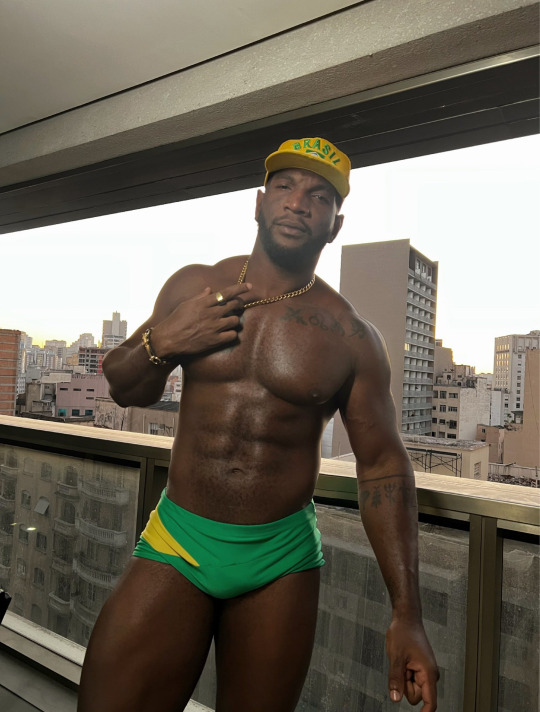

96 notes
·
View notes
Video
click here because you're missing out if you're not a member
https://www.facebook.com/groups/nubiannewyorkers/
90 notes
·
View notes
Photo


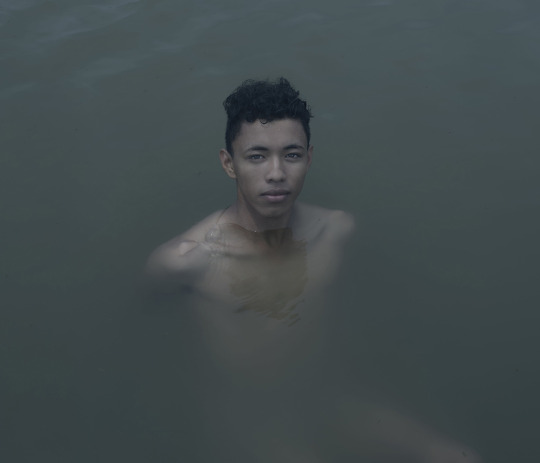


In 2015, the Mexican government finally recognized its 1.38 million citizens of African descent in a national survey, signifying a tremendous victory for the Afro-Mexican community who had up to that moment largely gone unnoticed on the margins of Mexican society. Chacahua and El Azufre, small villages located on the Pacific coast of Oaxaca, are populated mainly by Afro-Mexicans.
- Cécile Smetana Baudier
#mexico#latinx#latino#mexican#latin american#afro mexican#afromexicano#north american#afro-mexicans#afrolatino#afro latno#cécile smetana baudier
50 notes
·
View notes
Text

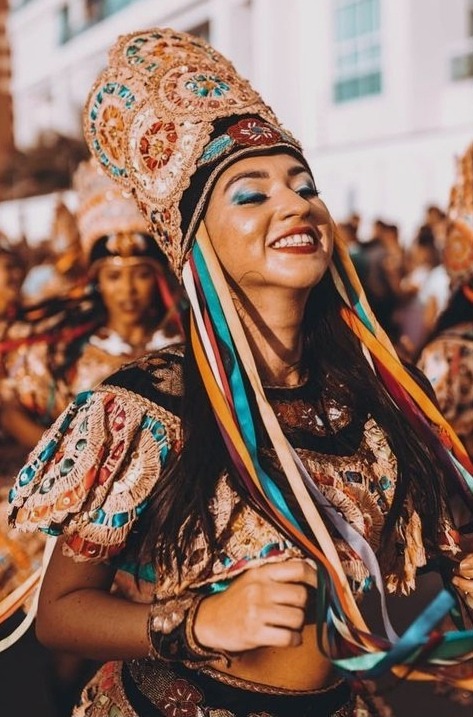


São Luís do Maranhão, Maranhão, Brasil ✨
#jasmineiros#stuff i posted#brasil#brazil#photography#afrolatino#afrobrasil#afrobrazilian#afro latino representation#afrolatina#brazilian#brazilian culture#brazilian women#brazilian folklore#folklore#folclore#latinoamerica#latino tag#latino#latin america#festival#sao joao#sao luis do maranhao#nordeste brasileiro#nordeste
88 notes
·
View notes
Text
Let's talk about San Baltasar, the Wise King, Saint of Afroargentines.
I think it's extremely interesting how one of the biggest afrodiasporic cults native to Argentina is that of El Santo Negro (the Black Saint) St. Balthazar, the Wise King. Other syncretic saint cults make mention to african deities or saints with titles such as "The Queen of Rivers" or "The Queen of the Sea", making the deities involved easily identifiable, but this cult in particular is one of the most widespread across the black population of Argentina and yet the most elusive in regards to who may be behind the mask. At least, until you pay attention to the details.
The Church first introduced the cult of Catholic Figures and Saints such as San Baltasar (King Balthazar) or San Benito de Palermo (St. Benedict of Palermo, the Moor) as a way to control the enslaved population politically and culturally. Although their goal was to dissipate african religions and install catholicism among them instead, they underestimated black argentines: after much effort, the church allowed the enslaved faithful to organize socially and politically and perform dances, drumming and singing for the saints of their formed Cofradía (similar to a congregation, but including social and political structures within it, naming a king and queen or a president and other culturally and politically significant roles). Thanks to the passing down of african culture and customs through these organized societies and the syncretism within them, we can proudly say the church failed in their attempts. The african spirits are very much still an integral part of afroargentines' lives. Today, although it has spread across the country and beyond, the center of this cult is in it's origin, the capital city of Corrientes, Argentina, in a neighborhood called Cambá Cuá.
The cult to San Baltasar is clearly african in origin, although with indigenous (guaraní) influences, such as calling the saint Santo Cambá/Kambá (Black in guaraní language), calling his statues Cambára'angá (guaraní for Black Figure), and some dancers dressing up as indigenous figures like el pombero, among other things. Thus, it is an afroindigenous cult, developing amongst mixed descendants of african enslaved peoples and guaraní natives. The cult is also a local expression of the most african of customs: ancestral veneration. The festivities honor not only the Saint himself, but all the black ancestors before us who are present in pictures at the altar, and answer to the call of the drums. The color red, that covers the saint and adorns his followers, is the color of warriors and protection in African Traditional Religions. He's offered food and drink (such as wine and traditionally made sangría), and most importantly dance and drums. He is invoked and honored, along with the ancestors, through drumming and dancing, through La llamada a San Baltasar and Saludos de Tambores a los Santos Cambá (Calling Saint Balthazar and Drum Salutations to the Black Saints).
His festivities, held in Corrientes around Epiphany, from January 1st to the 6th, include dancing afroargentinean rhythms such as diverse forms of candombe and samba. Particularly, he was traditionally honored with a dance called bambula, a form of ring dance where women move in short and slow steps, barely lifting their feet, while men jump in the air, and where one singer sings a phrase that is then repeated or answered by the others present. This kind of dance is native to Congo and Angola, and widely practiced by enslaved people and their descendants in the Southern United States, the Caribbean, Brazil, Argentina and Uruguay. The music used to this day to petition favors, to invoke his spirit into his image and even dispel or call thunderstorms or other natural phenomena, is called charanda and includes drums, guitars and triangles. Just like in other afrodiasporic devotional and resistance dances, these dances involve Kings and Queens of the dance, a hierarchy of drummers including those called Master drummers, and a hierarchy of the drums themselves as Chico, Repique and Piano.
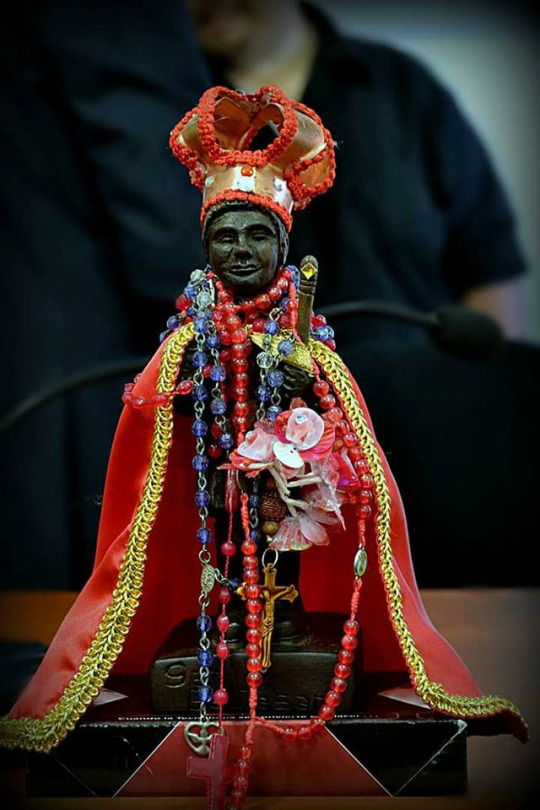
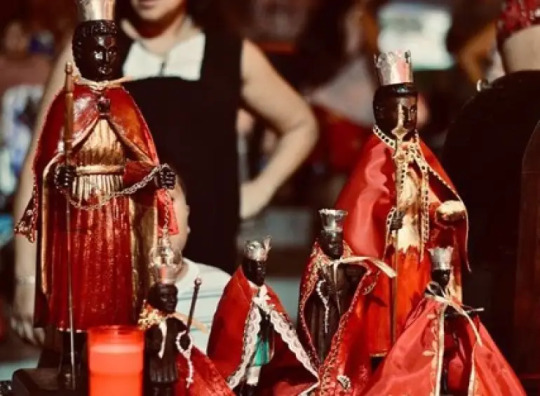
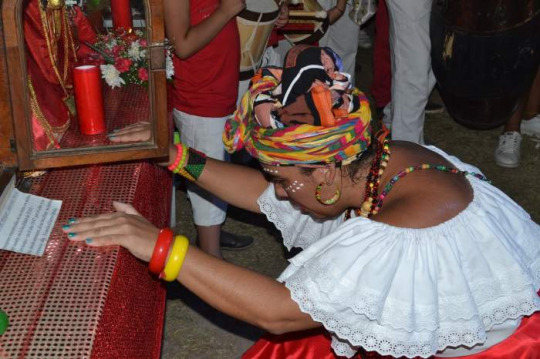


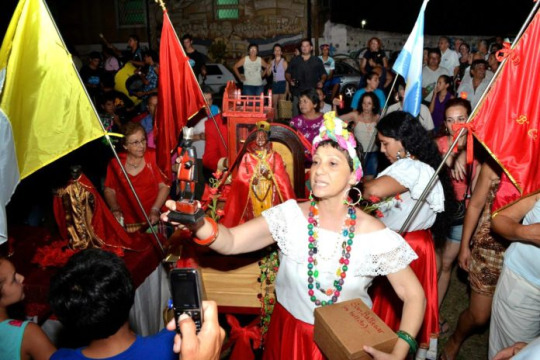
If you compare him to Xangó...
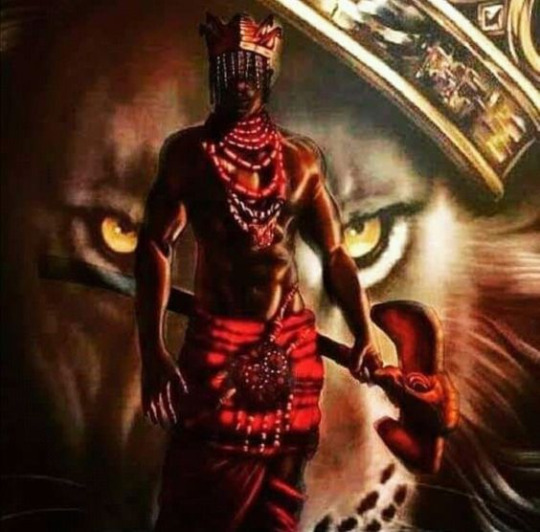
He carries a double-headed axe. He's often depicted wearing a crown. His colors are, surprisingly, also white and red, with gold accents. Also a King and a warrior, also associated with thunderstorms and fire, drums and dance. His followers also wear white and red beaded collares. Ringing any bells...?
Now, I am not saying they are the same Spirit, but there is an undeniable resemblance. You come to your own conclusions. It's kind of obvious that this afrodiasporic cult stems from either (a) a hidden, veiled cult to the orisha(s) or (b) a syncretic cult to african deities (not only orishas but maybe other african spirits too). There is, after all, strong ties not only to Yorubaland but also to Dahomey, Kongo, etc. Just in this instance, the spirit may resemble an orisha but the rhythms and dance are from kongo, so there is much more to it than just one or the other. There is a culture of resistance born from the union of Nations through music, faith and tradition.
Sources:
None of the images here belong to me: San Baltazar and festivities [1,2,3,4-6] and Xangó [1]
Festividad de San Baltasar : performances artístico-religiosas de la cofradía de la ciudad de Corrientes, by Cavalieri, Ana Belén, Universidad Nacional del Nordeste. Facultad de Artes, Diseño y Ciencias de la Cultura, 2018. Available for download at [Link]
San Baltazar, Historias de Corrientes at [Link]
The bamboula Lineage at [Link]
The Orishas, Indiana University at [Link]
#ATRs#afroargentina#afroargentines#afrolatine#afrolatinx#afrolatino#black saint#black saints#st balthazar#st. Balthazar#San Baltazar#Santería#shangó#xangó#santeria#african diaspora#african traditional religions#african diasporic religions#african diaspora religions#ADRs#san baltasar
20 notes
·
View notes